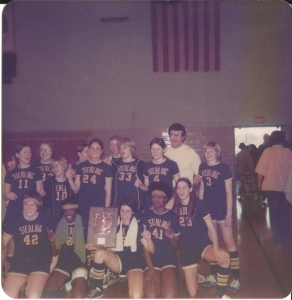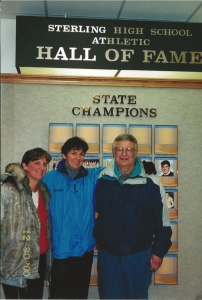 How do I put into words my emotions at being part of a packed arena of WNBA Minnesota Lynx fans cheering for women playing basketball? Almost 40 years after my teammates and I played ball with empty stomachs in empty arenas in the fledgling WBL, the first women’s pro league, I witnessed the first game of a WNBA final series between the nation’s 2 best teams.
How do I put into words my emotions at being part of a packed arena of WNBA Minnesota Lynx fans cheering for women playing basketball? Almost 40 years after my teammates and I played ball with empty stomachs in empty arenas in the fledgling WBL, the first women’s pro league, I witnessed the first game of a WNBA final series between the nation’s 2 best teams.
The Lynx hosted the LA Sparks in front of 11,823 fans electrifying historic Williams Arena (University Minnesota) known as the “Barn.” Four league MVPs –Sylvia Fowles, Maya Moore, Candace Parker, Nneke Ogwumike – and Alana Beard, defensive MVP, matched up on the floor to compete.
From the moment I entered the arena, I felt like a star, as I pulled on my complimentary 2017 MVP Sylvia Fowles T-shirt draped over my seat. Before tip off as tradition, fans stood until the Lynx scored their first basket. Only they didn’t score.
The Lynx started the game with a 28-2 point deficit and clawed their way back into the game. In the final minutes, the score ricocheted back and back forth and noise reached a crescendo.
The Barn rocked. The roar deafened. The intensity grew. In the end, my Lynx lost by one point on a fade away jumper by Chelsea Gray in the last 3 seconds. My disappointment was short-lived; they were all winners in my book exemplifying what it means to be champions.
Using sport as a platform to bring about positive change, and in solidarity with the NFL, LA Sparks stayed in the locker room for the national anthem and the Lynx players stood and faced the American flag with their arms locked together in unity.
The athleticism of players like Maya Moore, hanging in the air with Jordanesque moves, or Sylvie Fowles ripping the ball off the glass was stunning; their ability to defy age was equally commendable. With a median age of 30.7 Lynx players, the oldest average in league, showed the young bloods, they still got game.
Nowhere I’d rather to be than Lynx home court. Where else are we offered such wholesome entertainment?
In “our house” we put our differences aside and people of every age, race, and religious affiliation share a moment of good, clean fun. We sang, we danced, we chanted, we waved rally towels, we held our breath in suspense.
For me seeing kids wearing Lynx jerseys emblazoned with favorite players’ names brought the greatest joy. In the children’s eyes dreams sparkled. Today no girl grows up feeling like a misfit, an oddball, or a loser for being big, strong, and athletic. She knows that she belongs on the court, in the classroom, and at the head of the company.
The subliminal girl power message was not lost on me a Title IX pioneer who fought so hard for the right to participate in “boys” games.
How fitting that I should watch the game with my little sister and my daughter. After each great play, Karen fist bumped me with her 1977 first ever girls’ Illinois state basketball championship ring. My daughter, who developed the perseverance playing ball to reach her dream to become a doctor, pumped her fist.
Dreams my generation made possible.
Nearly four decades after women’s pro basketball made its floundering debut and failed, we finally triumphed.
“You done good sister,” Karen said squeezing my hand. “Look what you started, what we started.”
In an epic series, the Lynx would go on to win game five of in front of a sold out crowd at the Barn making history as 4 time national champions.
Unbeknownst to all, I was with them every step of the way


























